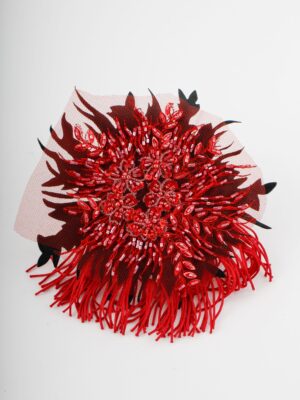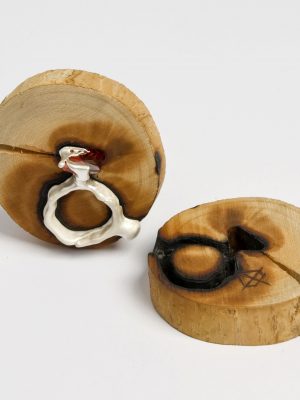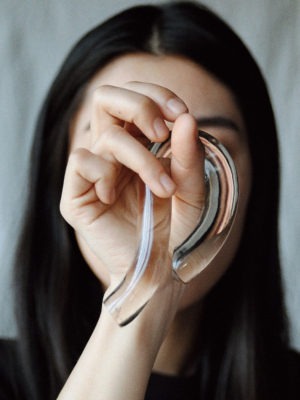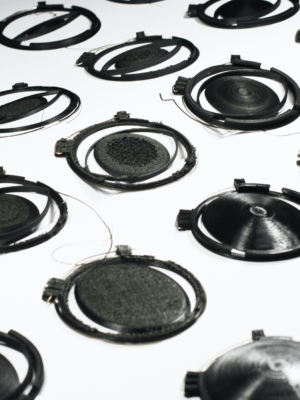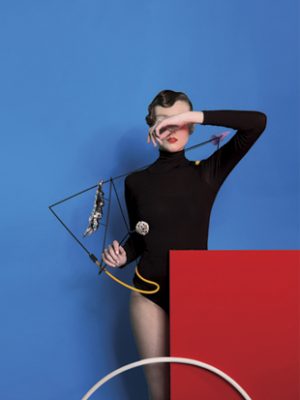My work begins with the juxtaposition of minimalism and white supremacy. ‘Cut From The Skin’ is a graduation collection of jewellery pieces inspired by ornamentation, and transformed into armour to safeguard the self and cultural identity. The armour was constructed from large sheets of metal that would curve around the body, engraved with ornamental designs. What drew me to this art form was examining how minimalism has been employed as a tool for cultural erasure and white supremacy over generations. I wished to create armour that enveloped and shielded the body, not from ancient weaponry, but from contemporary tactics. I perceive individuals who craft patterns and ornamentation as champions in this cultural movement, and I wish to celebrate them. This work aims to equip them with the means to not only sustain the work they’re undertaking but also to engage others to appreciate the allure and inspiration that pattern and ornamentation provide.
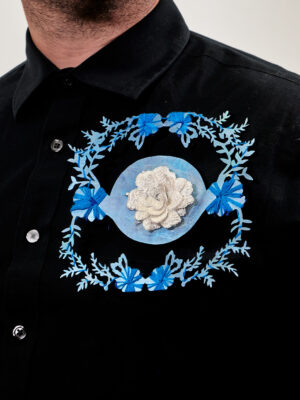
CO: What ideas or themes inspire your work?
KM: For the longest time, my work was driven by education and research. I would fully immerse myself in a new medium and learn everything I could about the craft and community. Recently I’ve found my focus lingering on artistic labor. Much of my inspiration comes from the world around me, whether that be the masonry of Philadelphia’s architecture, the intricate designs of New Orleans wrought iron, or the stunning garments worn by drag queens. Diving into wearable art has allowed me to ask questions about identity and impact, which translate my lived experiences into powerful imagery and material choices. I’m interested in exploring my queer identity, understanding what it means to have a learning disability in academia, and determining how I can still make positive changes in my communities if I must keep moving to new cities for opportunities.
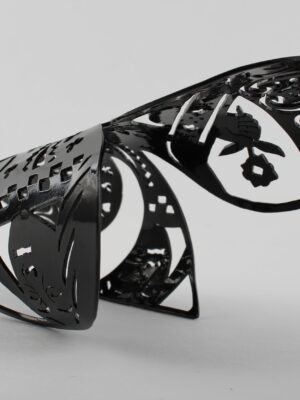
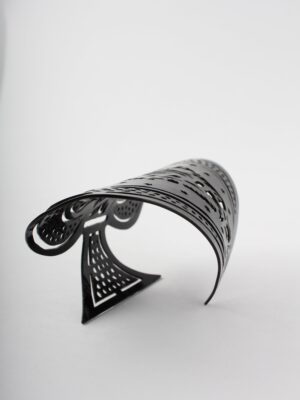
CO: How do you envision the future of the field you have chosen and your practice within it?
KM: As a millennial, I’ve learned not to treat the future as a known entity. Given current trends, nothing is a sure bet. One trend I am currently appreciating is the resurgence of craft. As AI grows and more items are produced cheaply, we’re going to see a renewed appreciation for what human hands can create. One-of-a-kind and non-commercialised objects will likely hold greater value. Simultaneously, I don’t believe this passing down of techniques and disciplines will primarily occur in the classroom. Instead, online communities will strengthen as more people share their crafts. This direction inspires me as well. I’ve already delved into sewing and garment construction, but I aim to distinguish my work from mass-produced items and am committed to learning how to produce high-quality pieces.
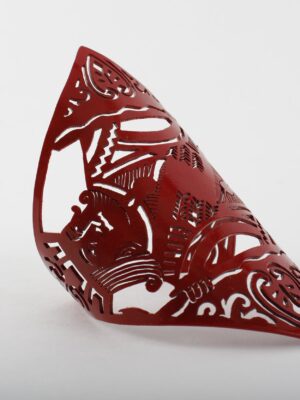
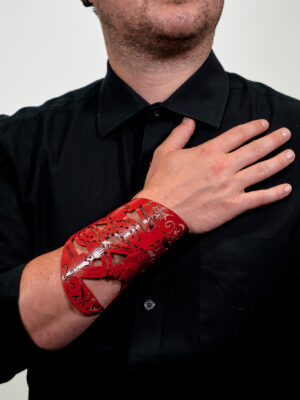
CO: Could you describe your approach, and how does it reflect tradition, current trends or push boundaries within the field?
KM: My work follows traditional lines in my use of craft. The way in which techniques have been passed down from one craftsperson to another has always been heavily incorporated into my work. Where my approach deviates from tradition is in weaving these craft histories together to create something new. I also like to bring in current thoughts on materiality to honour and highlight not only the metal I’m working with but also the patterns and imagery that have evolved over thousands of years. For example, paisley is a design element that originated in Persia but was transformed into shawls in Kashmir, and despite this, it took its name from a town in Scotland. It somehow ended up on bandanas that queer men used as codes to communicate sexual preferences with each other. All of this background, while not always apparent in the work, factors into the creation and appreciation of what the material of this pattern represents and how to utilise it.
You can find more about this work at KeithMichealMurphy.com or follow their work at @KeithMichealMurphy on Instagram.
